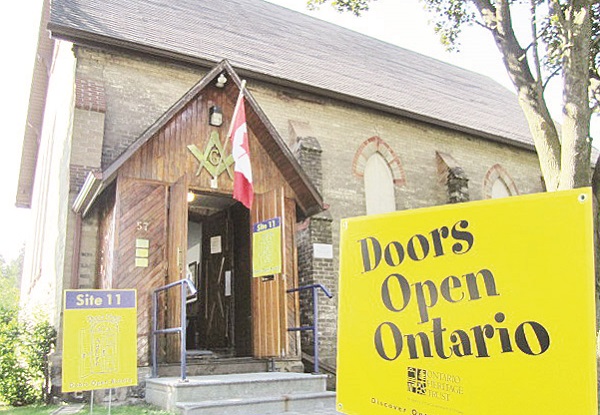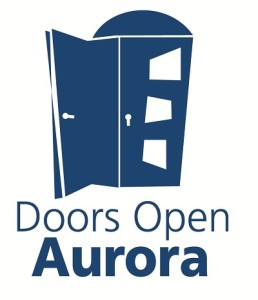Archive
Doors Open 2014 features sites in Southeast Old Aurora
July 30, 2014 · 0 Comments

By John McIntyre
The part of town we now think of as Southeast Old Aurora was first divided into building lots by John Mosley in 1854, including the area from Wellington Street south to Metcalfe and from Yonge Street east to Berczy.
Mosley believed the arrival of the railway in 1853 meant that new residents, businesses and industries would soon want to buy land in the village then called Machell’s Corners.
“Aurora,” symbolizing the dawn, became the village’s new name in 1854 as John Mosley and others realized that they were at the dawn of a new age, an age of railways and the Industrial Revolution as the pioneer era receded into memory.
Near the centre of John Mosley’s plan was a large lot labelled “Town Hall and Market Block.”

This was the northeast corner of what came to be known as Town Park after the local Council purchased the entire area bounded by Mosley, Wells, Larmont and Metcalfe Streets in 1867.
It seems appropriate that today’s Farmers’ Market and Artisan Fair is located in the same area that was designated for this use 160 years ago. The lot at the northeast corner of Town Park came to be the site of Aurora’s Drill Shed or Armoury, built in 1872.
This building is still associated with the Queen’s York Rangers and, until very recently, was the oldest armoury in Canada still in military use.
Mosley’s 1854 plan also contained a site for an “Academy” to be located on the east side of Wells Street, half way between Wellington and Mosley streets. Ultimately, a different site was chosen on Wells Street, directly overlooking Town Park itself. That is where the Aurora High School was erected in 1892.
This building was rebuilt in 1923 in the Classical Revival style and stands today as the Wells Street Schoolhouse Lofts.
Next door, at the corner of Wells and Mosley streets, stands the Rising Sun Masonic Lodge.
Like the Farmers’ Market, this is an essential stop on Doors Open again this year. The Lodge has been located here since 1885, although the building itself dates to 1877 when it was built as the Methodist Episcopal Church.
Its elaborately painted interior, filled with colourful Masonic symbolism, is remarkably well preserved.
As the home of Aurora’s Farmers’ Market and Artisan Fair, surrounded by buildings which recall Aurora’s military, educational, religious and social history, Town Park is Aurora’s equivalent to the Town Square or central piazza of much older communities.
About two blocks to the west, at the corner of Church and Victoria Streets, Aurora built a very grand elementary school which today is home to the Aurora Cultural Centre. This building was constructed in 1886, replacing an earlier school building on the same site.
Designed by Thomas Kennedy, its decorative façade and soaring bell tower suggest the faith villagers had in the power and importance of public education. Details of its belfry and decorative brickwork recall aspects of Indian design at a time when Queen Victoria was crowned Empress of India and the sun never set on the British Empire.
This provincially designated historic site is once again a Doors Open participant.
If you walk west on Church Street down to Yonge and look back, you will see an essential element of John Mosley’s 1854 village plan: the street is positioned so that Trinity Anglican Church stands exactly at its head, providing a pleasing vista up from Yonge Street.
At the north corner of Yonge and Church streets stands the Aurora Public Library, another participating site this year. This modern building is built of yellow brick which recalls the original colour of the nearby Cultural Centre and many other nineteenth-century Aurora buildings.
These earlier buildings used bricks which came from the Tyler Street brickyard, once located only two blocks to the west. While the library building is new, the Aurora Public Library traces its history well over a century to the Aurora branch of the Mechanics’ Institute.
Mechanics’ Institutes, begun in England to advance the education of “mechanics,” as all those who worked with their hands were known, also provided classes, lectures, and special events, much as the Aurora Public Library continues to do today.
There is much to learn about the history of Aurora at Doors Open. We hope you will join us on Saturday August 16.
To help plan your route, be sure to check out www.doorsopenontario.on.ca to see a full list of participating sites for the Doors Open Aurora event as well as other Doors Open events across Ontario.
McIntyre is a member of Aurora’s Heritage Advisory Committee, and serves as president of the Aurora Historical Society.











